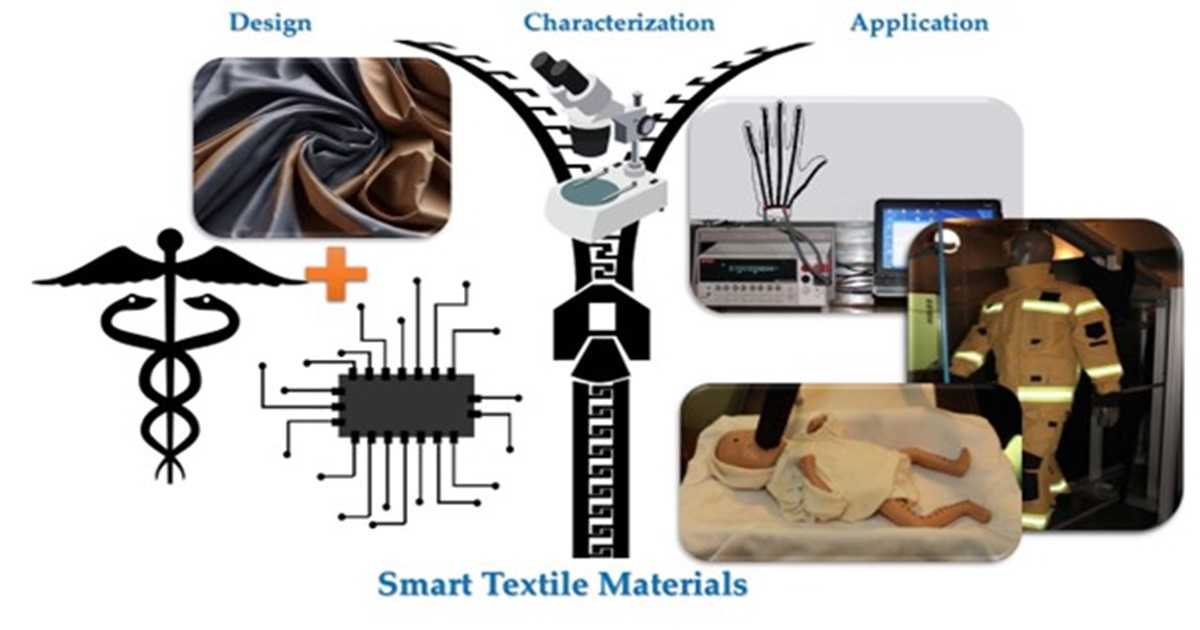Smart Textile Materials: Design, Characterization and Application
A special issue of Materials (ISSN 1996-1944). This special issue belongs to the section "Smart Materials".
Deadline for manuscript submissions: 20 January 2026 | Viewed by 5697

Special Issue Editors
Interests: innovative textile materials; functional printing using electroponditating polymers
Special Issues, Collections and Topics in MDPI journals
Interests: natural fibers; wool; hemp; linen; processing
Interests: wool; biodegradation; fiber structure; fiber morphology; polypropylene; crystallization; nucleating agents; pigment
Special Issues, Collections and Topics in MDPI journals
Special Issue Information
Dear Colleagues,
Smart textile materials are currently among the most rapidly developing research topics within materials engineering. They have various applications in many areas of life, including protecting people in conditions that threaten life and health, as well as monitoring our environment, in the automotive industry and construction, which leads to the development of new techniques for producing such solutions.
In recent years, interest has been piqued in the area of intelligent materials and their design by combining various fields of science such as electronics, computer science, textiles, and medicine.
Increasingly extensive research is being conducted to understand the structure and properties of electrically conductive structures integrated with materials such as textiles, wood, plastic, etc.
This Special Issue entitled “Smart Textile Materials: Design, Characterization and Application” is devoted to all aspects of the science and technology of electroponditrium polymers, including, among others, those integrated in textile or glass structures for applications in fibrinity, car industries, furniture, intelligent materials, environmentally friendly materials, reliable new approaches to testing, methodology, processing and production techniques, printing, aging, and recycling.
Prof. Dr. Ewa Skrzetuska
Dr. Anna Kicińska-Jakubowska
Prof. Dr. Jan Broda
Guest Editors
Manuscript Submission Information
Manuscripts should be submitted online at www.mdpi.com by registering and logging in to this website. Once you are registered, click here to go to the submission form. Manuscripts can be submitted until the deadline. All submissions that pass pre-check are peer-reviewed. Accepted papers will be published continuously in the journal (as soon as accepted) and will be listed together on the special issue website. Research articles, review articles as well as short communications are invited. For planned papers, a title and short abstract (about 250 words) can be sent to the Editorial Office for assessment.
Submitted manuscripts should not have been published previously, nor be under consideration for publication elsewhere (except conference proceedings papers). All manuscripts are thoroughly refereed through a single-blind peer-review process. A guide for authors and other relevant information for submission of manuscripts is available on the Instructions for Authors page. Materials is an international peer-reviewed open access semimonthly journal published by MDPI.
Please visit the Instructions for Authors page before submitting a manuscript. The Article Processing Charge (APC) for publication in this open access journal is 2600 CHF (Swiss Francs). Submitted papers should be well formatted and use good English. Authors may use MDPI's English editing service prior to publication or during author revisions.
Keywords
- smart textiles
- textronics
- electroconductive polymer
- composites
- fillers
- intelligent materials
- ecological materials
- testing
Benefits of Publishing in a Special Issue
- Ease of navigation: Grouping papers by topic helps scholars navigate broad scope journals more efficiently.
- Greater discoverability: Special Issues support the reach and impact of scientific research. Articles in Special Issues are more discoverable and cited more frequently.
- Expansion of research network: Special Issues facilitate connections among authors, fostering scientific collaborations.
- External promotion: Articles in Special Issues are often promoted through the journal's social media, increasing their visibility.
- Reprint: MDPI Books provides the opportunity to republish successful Special Issues in book format, both online and in print.
Further information on MDPI's Special Issue policies can be found here.








